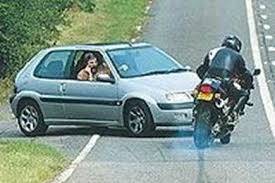
If you are a driving enthusiast, do not read any further. This article is heralding the death of driving as we know it. The world is getting ready to hand the control of the family car to the computer. You can no longer be trusted!
The technology that is now being offered, as far as anti-collision is concerned, has actually been developed over the last 10 years, but as the modern car becomes more electronic, it has become easier to incorporate the anti-collision technology into the car’s electronics.
Take electronic cruise control for example. This works through the Electronic Control Unit (ECU) and adapts the pre-set road speed to the fuel/air mixture the engine receives. As speed drops, increased fuel/air is called for and the car speeds up. And vice versa when the road speed exceeds the pre-set level. Going downhill, the ECU can even tell the brakes to apply light pressure to bring down and control the road speed.
So the vehicles have had the ECU ‘smarts’ for some time, and all that is needed is to hook an anti-collision system in with the cruise control ECU. The human anti-collision model relies on visual interpretation of the distance and previously stored knowledge of how much distance it will need to pull up from that speed. Some of us are better than others at this! There is also the problem that when you leave two car lengths to the car in front, that space is very quickly filled with two cars and several motorcycles!
To do this anti-collision calculation electronically is done by using a form of radar. The message comes back to the car to indicate that at the current road speed, there is not enough distance in which to pull up without ‘rear-ending’ the car in front. The ECU can then shut down the fuel/air and instead of just getting the brakes pre-charged, can now apply the brakes (independently from the driver) to slow the car enough to avoid the rear end collision.
Toyota have been developing their concept of this system, which is designed to not only stop rear end collisions, but to stop you running red lights as well (it will never be accepted in Thailand where running red lights is a national pastime).
The system detects other cars, street aids and passers-by as you drive and then sends a signal to the driver if it thinks that you will not be able to stop in time. The signals are received from transmitters placed in street signs, lights, other vehicles and hand held units for pedestrians. It could also go as far as to brake the car if it feels the driver hasn’t realized the lights are on red.
The above system relies on signals transmitted from traffic lights or even people, but there is another way. Bounce the signals back to the receiver unit. This type of system has been developed in the UK with the potential to make sophisticated reversing and anti-collision safety aids an affordable accessory for the mass market. I have similar with the Mobileye unit in my daily driver.




